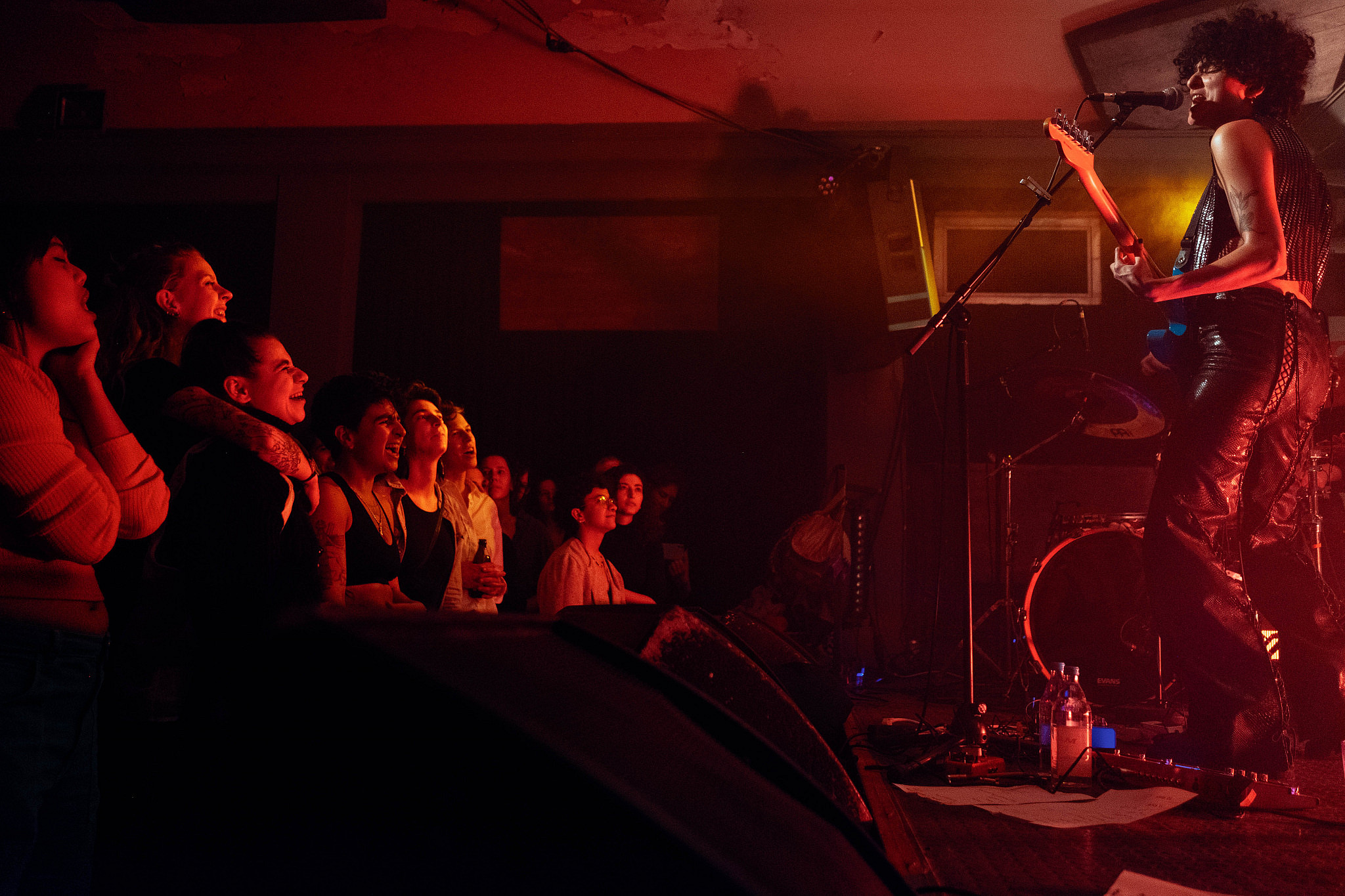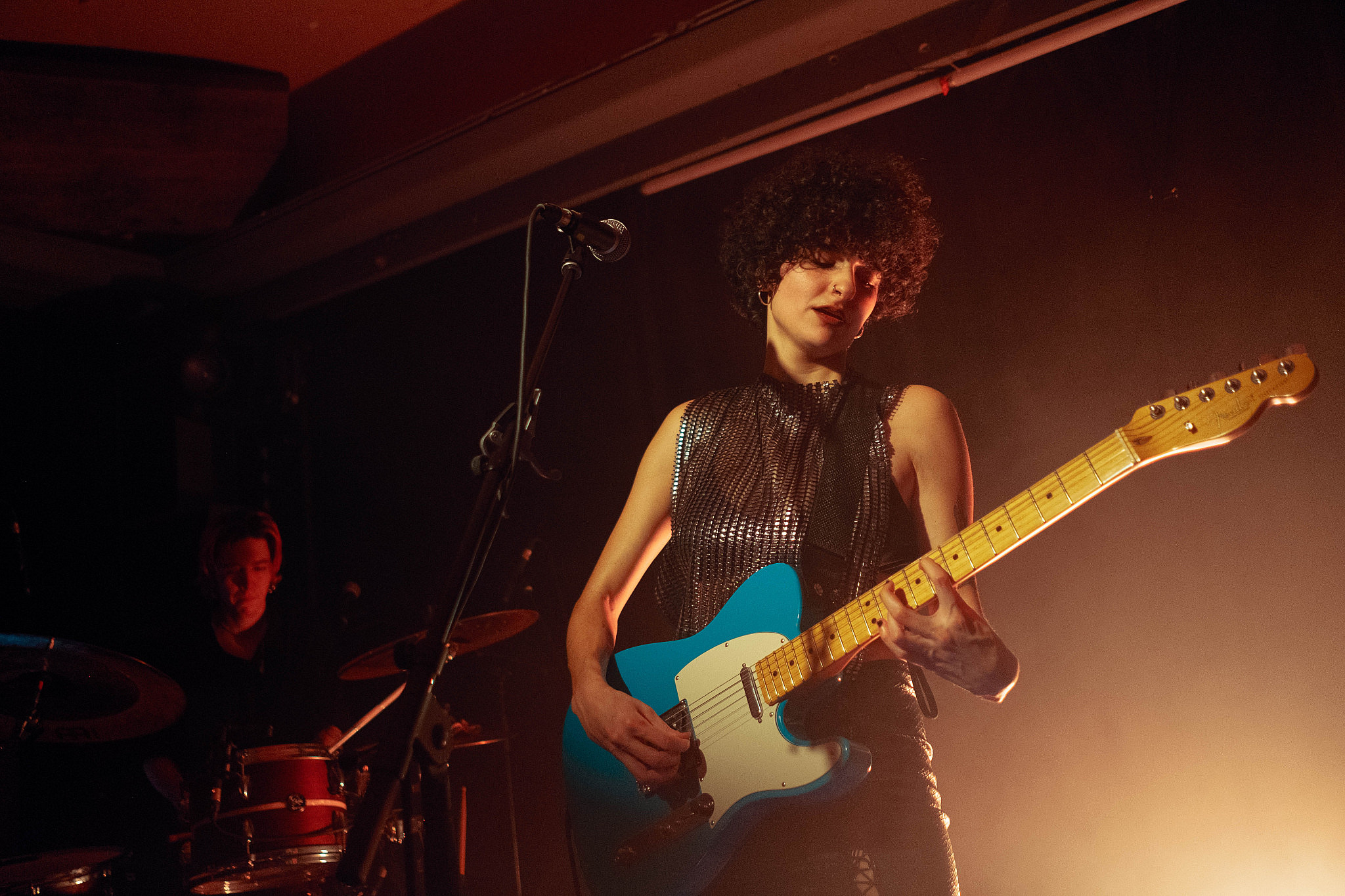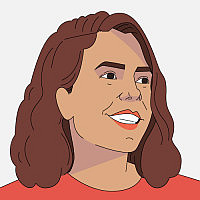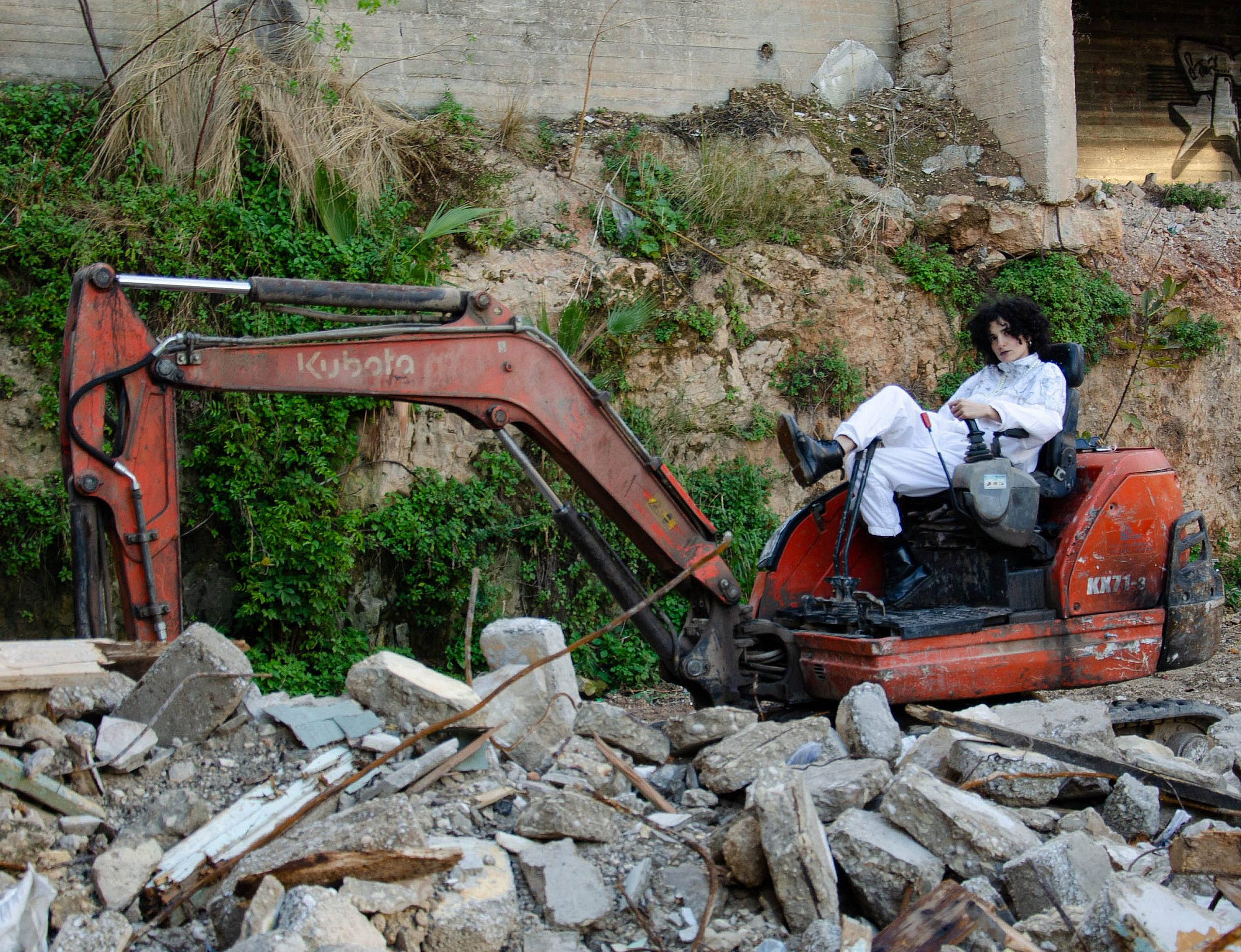The unique music of Palestinian artist Rasha Nahas is a beautiful, balanced blend of the past with the present. It simultaneously reflects her family’s deep roots in the Palestinian village of Tarshiha in the Upper Galilee, the coastal city of Haifa where she was born and raised, and the German capital Berlin, where the composer, singer, songwriter, and instrumentalist has been living for the past five years.
For Palestinians who are Israeli citizens, the tapestry of our lives is made up of the many places that we feel connected to in our homeland. But when we choose to move to the diaspora — to study, to advance our careers, or just to put some distance between ourselves and the difficult, debilitating reality in Palestine — it is almost never that easy.
Nahas brilliantly captures this chosen diaspora complex in the title track of her first Arabic album, “Amrat” (“Sometimes”), released by the U.K. label Cooking Vinyl, on Jan. 20:
Sometimes I long for my homeland
Sometimes I miss myself
Sometimes I doubt my path
Sometimes I don’t know what I want
Sometimes I fear the depth
Sometimes it’s cold in this embrace
Sometimes I’m scared the past will forget me
If I weren’t scared I would pack my things and go.
With tours scheduled across Europe, South West Asia, and North Africa, “Amrat” is, in the words of the album description, a “sentimental body of work, maneuvering seamlessly between the thematic duality of urban and rural landscapes, waltzing between contemporary electronica and the rawness of the old-school, singer-songwriter era.” For Nahas, the choice to produce the songs in Arabic while trying to expand a career in Europe was not the easiest path, given the language’s limited audience in the region. “But I cannot live any other way,” she says, “and I’m grateful every day for the life I live.”
Nahas knew at an early age that she wanted to go in a “very different direction” than what was socially accepted. “Heteronormative life was never appealing to me,” she tells +972. “Not heteronormative as in gender, but heteronormative as an approach to being, and norms that are given to us as the default. So I followed my instinct, and I still follow it.”
Music thus came to Nahas as a “natural instinct,” nurtured by her parents’ support and her own desire to explore herself. Her mother came from a family of seasoned oud players, though her parents themselves were not musicians. Nonetheless, music was all around her growing up. “My brother and sister listened to a lot of music,” she says. “I was introduced early on to ‘60s and ‘70s music, like John Lennon, The Beatles, and later Queen, Guns N’ Roses — a lot of old school rock and roll.”
Nahas began playing the keyboard and writing songs even as a child. She was then attracted to the guitar, choosing to study it in its classical form — “so my parents were happy,” she giggles. After nine years studying the instrument, she started producing her own songs and performing them live. “I never considered myself so much as a singer,” she says, but playing her own material before audiences, “it made sense for me to sing them.”
As her reputation as a local artist grew, Nahas started performing in Haifa’s small Palestinian-owned bars and cafes with different musicians and groups, eventually becoming one of the leading figures of the Palestinian underground music scene. Her first release came in 2016 with her English-language EP “Am I,” which was produced between Haifa and Bristol in the U.K.
Two years later, when she was still only 21 years old, Nahas moved to the cultural hub of Berlin, arriving only with her guitar and without a framework for studying or working. But she quickly found the city to be a nourishing environment to grow as an artist. “Berlin gave me a lot of space,” she reflects. “Moving to a new country in your twenties, working on your visa, meeting people, performing … I started composing music for theater as well.” Her critically acclaimed, English-language, theatrical-poetic rock debut album, “Desert,” produced by her own label Rmad Records and released in early 2021, chronicled her personal journey from Haifa to Berlin.
‘There’s something disarming about music’
On her official website, Nahas is described as a “genre-defying, narrative-focused artist,” who has been “crafting a keenly singular music universe, cultivated in and loyal to the underground, and driven by candid lyrics with disarming vulnerability.” When asked what is the narrative she tries to convey through her music, Nahas pauses for a moment before answering in her calm, soothing voice.
“As a woman, and as a Palestinian from ‘48 [with Israeli citizenship], I feel a lot of expectation and responsibility around how to act or behave or represent,” she explains. “I realized from performing to different audiences and touring the world with my music that the most valuable and impactful thing I can do is share my story in a very simple and honest way.”
Nahas says that she appreciates people who make a political statement by raising a flag or protesting, “as resisting should come in all forms.” But for her, a song that touches someone’s heart can sometimes be far more powerful. “There is something disarming about music and its emotional impact,” she says. “When a song hits you, you can like the artist or hate them for what they support, but the song is going to penetrate through those walls.”

She describes the way she crafts her art as “critical and radical,” drawing inspiration from a range of sources including listening to different albums, watching lectures, and attending the theater and spoken word performances. “The more open you are to the world, the more you have the vocabulary and tools to express yourself in a way that is unique,” she says.
Nahas is also deeply influenced by what she reads: “I try to support my approach with theory, because sometimes I feel like I need something to lean on.” But when she writes, she tries to put theory aside and focus more on her feelings in the moment. “I theorize a lot in my life, but when I’m with a pen and paper, I let the emotions flow, and very often I leave songs undone because I feel like the flow is not there.”
And what does it mean for her to be an independent, female, Arab, Palestinian artist? “Sometimes it means everything and sometimes it means nothing,” she replies with a smile. She tries to ignore these definitions when she’s creating her art, because it is important for her to write from a place of the “simplest idea of self,” she explains.
Nahas emphasizes that her relationship with her identity changes when she is in the diaspora compared to when she is in Palestine. “When I’m back home, I’m part of a community: people look like me, dress like me, and there’s a discourse that ideas are shared in. But when I’m in Europe, I feel I function in a different role — like my black, curly hair has a different place here, and my body as a person of color, a female artist, plays a different function when I’m outside of my environment.”
She also faces structural challenges, like the fact that her Israeli passport prevents her from traveling to certain countries, and controversies about from where to receive funding. Releasing her album in Arabic also means having to convey her narrative to non-Arab audiences despite the language barrier. Moreover, she battles with being misrepresented and misquoted in the media, especially “when they want to tell my story with their terminology and their idea of who I am.”
But at the same time, being in Berlin liberates her from many of the challenges Palestinians face in their homeland, on both a structural and societal level. Alongside constant suppression and censorship from Israeli authorities and right-wing groups, several Palestinian artists were forced to cancel shows last year in the occupied West Bank, Jerusalem, and Israel after facing threats from Palestinian groups opposing certain artists’ identities and lyrics around sexuality or religion.
“It’s a privilege to be in Berlin because I’m able to play, perform, and be who I am and express my very colorful and precious identity. But I see what my peers and friends go through back home and it is worrying,” she laments. “It is the same uprooting and suppression — both are related, and I’m sad that they are.”
Nahas emphasizes that during such dark times, it is important to lean on solidarity and empowerment within the community and the art scenes. It is vital, she says, to remember that on an individual and collective level, we should use art as a way for our voices to mirror and shape society, and to stand in solidarity against any oppression toward Palestinian art.
‘What is this place I long for?’
“Amrat” is Nahas’s first full Arabic-language album with 12 songs. In it, she collaborates with Egyptian singer Dina El Wedidi, whom she calls an “icon,” and Palestinian singer Terez Sliman, whom she describes as a “powerhouse.” Among other themes, the album reflects on homesickness, life in Europe, and surviving the COVID-19 pandemic.
Nahas began writing it when she had an injury that left her unable to move her hands for some time and thus unable to play the guitar, and so turned to producing more electronic music instead. She wrote the rest of the songs after she recovered, which led her to divide the album into two parts. “The two chapters represent to me the duality of the urban and rural landscapes, the city and nature, topics that were very present to me during the pandemic,” she explains.
The album also represents something of a healing journey. Many lyrics speak to the “inner child,” and others vividly describe raw emotions and feelings. This was important to her, Nahas says, because it is a strength to know “your weaknesses, your wounds, who you are, and own it while staying open to life.”
“Something about the Arabic language brought up something a lot more personal for me,” she continues. “It created some kind of a journey with inner loops, in between a lot of psychotherapy sessions, opening deep wounds, looking deep inside, reflecting on the past, and looking into the future, zooming out and zooming in. It is important for me to talk to my inner child and externalize it in a way that is more relatable to people.”
The album also taught her how to express herself in a way that encourages others to do the same. “Songs have power, especially in an age where we are surrounded by screens, violence, and oppression,” she explains. “So it was important for me to bring that openness and vulnerability, while also reaching out to people to invite them to open up as well.”
Nahas shot the video for the album’s title track in several locations in her hometown of Haifa — starting with the neighborhood of Wadi Salib, where old Palestinian houses from before the Nakba stand crumbling and empty, as haunting witnesses of the atrocities that frightened and expelled their residents to faraway lands. “For me, it is a symbol of holding on to how things used to be versus how things are now,” she laments.
Every time she comes back to Haifa, Nahas notices that the city is endlessly changing. She explores this tension in the song. “It is my hometown, so it is a really big part of my identity and who I am and my heart,” she says. “Starting the video in Wadi Salib with the line ‘Sometimes I miss my homeland’ raises the question: What is this place I long for? Is it my idea of it? Is it my relationship with it? Is it my memory of it? Is it what it really is?”
Nahas was in Palestine recording the album during the events of May 2021, when a mass Palestinian uprising, a campaign of Israeli repression, and a brutal war on Gaza consumed the country. She had two more days of recording left at The 67 Recording Studio in the village of Majdal Shams, in the occupied Golan Heights, when settler and state violence broke out against Palestinians inside Israel, including in Haifa.
“It is almost impossible to begin to describe how it felt,” she reflects. “I felt very suppressed physically. It was really extreme and traumatizing, and I do not think you can explain it to anyone from the outside. It was very scary for a few days in Haifa. In general, the whole place did not feel safe whatsoever. It was mind-blowing to see the amount of hatred and how much Palestinians were unwanted, suppressed, and attacked just for existing.”
The “Amrat” video ends at the Mediterranean shore, in stark contrast with how it starts in the destroyed and abandoned neighborhood of Wadi Salib. “The sea is where I feel the most alive, most myself, most connected, grounded, and happy,” she says. The shot of the beach accompanies the chorus:
Wherever I sleep
I lay my head
Under a window
So the wind will blow
And I’ll be able to love.



